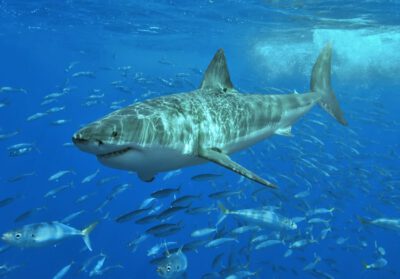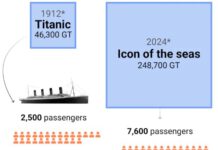
(CC BY-SA 3.0)
The National Marine Fisheries Service today declined to protect great white sharks off the coast of California under the Endangered Species Act (ESA). Although peer-reviewed scientific population estimates at the two primary white shark aggregation sites indicate fewer than 350 adults and sub-adults, the agency denied protections to the sharks. This decision follows a NMFS finding that this white shark population meets the criteria to qualify as a distinct population segment under the ESA, which allows the species or sub-species to be considered for listing. Oceana, the Center for Biological Diversity, Shark Stewards, and WildEarth Guardians are alarmed by the decision not to afford the sharks the protected status that they clearly warrant under the U.S. ESA.
The groups had petitioned in August 2012 for federal protection of these important ocean predators, which are under threat of extinction from a multitude of human causes, including bycatch in fisheries, pollution of habitat, and climate-related impacts. Earlier this year, California wildlife officials placed great white sharks on the candidate list for state Endangered Species Act protection under California law. A final California Fish and Game Commission decision is expected next winter.
The federal protections denied today would have led not only to a reduction in shark deaths caused by the gillnet fisheries, but also to increased scientific research on this mysterious and wide-ranging species. Conservationists remain committed to urgently tackling unmanaged white shark bycatch by the California and Mexico gillnet fisheries, which are presently the main threat to the survival of these iconic sharks, as well as to securing meaningful across-the-board protections for the species.
“The federal government simply made the wrong decision in the face of the best available science,” said Geoff Shester, California Program Director for Oceana. “However, our efforts have demonstrated the dire need for more research on West Coast white sharks, and we should all agree that steps need to be taken immediately to start managing the white shark bycatch problem in gillnet fisheries.”
“We’re really disappointed that the sharks won’t be protected under federal law. This means they’ll die painfully in fishing nets instead of getting the safety net of the Endangered Species Act,” said Catherine Kilduff, Staff Attorney at the Center for Biological Diversity.
In its decision, the Fisheries Service discounted the first peer-reviewed scientifically published population estimate of West Coast great white sharks which unveiled alarmingly low numbers of breeding females — numbers drastically lower than those of most other endangered species. The information referenced in the petition continues to be the best available science and meets the legal criteria for listing under the Endangered Species Act: All indications are that these ancient animals are seriously at risk of extinction.
“While we appreciate the evaluation that NMFS has given this species petition, we hope that white sharks will receive additional information from scientists, and increased scrutiny from California fisheries on the nursery to ensure long-term protection for this population is given,” said David McGuire, Director of Shark Stewards.
“The threats to our oceans and the species that call them home are grave and increasing, yet of the 1,475 species protected under the Endangered Species Act, only 94 are marine species,” said Bethany Cotton, Wildlife Program Director at WildEarth Guardians. “NMFS‘ refusal to protect the imperiled great white shark is part of a larger pattern of failure to address threats to marine species and ocean health.”
Importantly, the state of California has direct authority over the biggest known threat to white sharks, the set gillnet fishery targeting California halibut and white seabass, which is responsible for the vast majority of the documented bycatch of juvenile white sharks. The California Department of Fish and Wildlife is currently conducting its own internal population status review, based on a similar petition the groups filed last August to list the population as endangered under the California Endangered Species Act.
California is in no way beholden to the same bad decision that the federal agency made. The state should take a more rational approach when it comes to its listing decision and the need for additional research, monitoring, and management of great white sharks.
While the federal Fisheries Service decision not to protect white sharks off the West Coast is indefensible from a scientific point of view, the response to the petitions has yielded some benefits, including generating more interest in, and dialogue over, white shark research; increased public awareness of the importance of white sharks in the ecosystem and the threats facing them; and significant momentum for regulators to quickly tackle the shark bycatch problem.
About West Coast Great White Sharks
Great white sharks found off California and Guadalupe Island, Mexico, comprise the Northeastern Pacific population (referred to above as U.S. West Coast), genetically distinct and isolated from all other great white sharks around the globe. In 2011 and 2012, new scientific studies produced the first population estimates of U.S. West Coast adult and sub-adult great white sharks, together totaling fewer than 350 sharks– far lower numbers than researchers expected. The continued existence of white sharks is also hampered by their low reproductive output, slow growth rate, late maturity, and high mortality rates during the first year. Great white sharks are a critical part of the ocean ecosystem, playing an important top-down role in structuring the ecosystem by keeping prey populations in check, like sea lions and elephant seals. The presence of great white sharks ultimately increases species stability and diversity of the overall ecosystem.
Oceana
https://oceana.org











